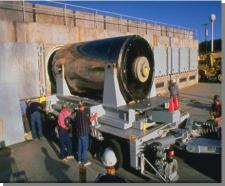 A number of CEP members have expressed a strong interest in returning to the matter of long-term spent fuel storage early in 2015. We are fortunate to have been approached by the Washington DC-based Bipartisan Policy Center (BPC) to organize a joint meeting with the CEP in January as part of an 18-month effort to generate action on the movement of used nuclear fuel in the U.S. With the short timeframe, we will need to finalize the event very quickly.
A number of CEP members have expressed a strong interest in returning to the matter of long-term spent fuel storage early in 2015. We are fortunate to have been approached by the Washington DC-based Bipartisan Policy Center (BPC) to organize a joint meeting with the CEP in January as part of an 18-month effort to generate action on the movement of used nuclear fuel in the U.S. With the short timeframe, we will need to finalize the event very quickly.
BPC is working on an initiative, “America’s Nuclear Future: Taking Action to Address Nuclear Waste,” to reinvigorate and expand the discussion on nuclear waste, identify barriers inhibiting progress on nuclear waste, and explore options to break through the barriers. The effort is being run by Tim Frazier who previously ran the President’s Blue Ribbon Commission on America’s Nuclear Future. I am mindful that a joint program with the BPC will be far more impactful than a program that we might endeavor to execute on our own.
Important to the BPC effort are regional meetings to identify and discuss the barriers to moving forward on nuclear waste and potential actions to remove the barriers. BPC has hosted meetings in the Northeast at MIT in June, in the Southeast at Georgia Tech in Atlanta in September, and in the Midwest in Chicago in November. A joint BPC/CEP meeting for Southern California is planned for the evening of Tuesday, 27 January, or Wednesday the 28th.
Meeting Overview
Plans include two panel discussions. The intent is to present a range of viewpoints and panelists are to be announced. The first panel will focus on federal issues as facilitated by Tim Frazier. David Victor will chair a second panel discussion with a focus on San Onofre and state issues. The second panel discussion will include the full CEP, a facilitated public comment period, and serve as our Regular Meeting for 1Q 2015.
The doors are opening wider on our discussion of Nuclear Waste at San Onofre. Once again we have the opportunity to bring this topic forward on to the national stage. The question is will you join us? Only you can make your voice heard.






